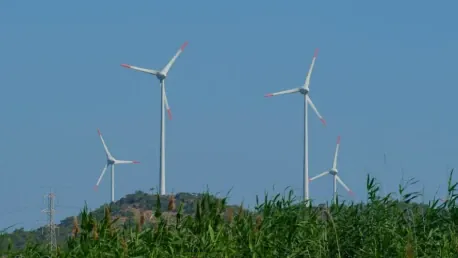The California Public Utilities Commission (CPUC) has launched a forward-thinking centralized procurement strategy aimed at revolutionizing the state’s clean energy landscape. Directed by the California Department of Water Resources (DWR), this strategic framework focuses on acquiring a robust 10.6GW of long lead-time energy resources. Among these, CPUC aims to secure 7.6GW of offshore wind, 1GW of geothermal energy, 1GW of multi-day long-duration energy storage, and another 1GW of storage with at least a 12-hour discharge period. These technologies are prized for their potential to significantly drive California toward its 2045 greenhouse gas reduction goals, lower energy costs, and enhance the diversity of the state’s energy grid.
Centralized Procurement Initiative
The Role of the CPUC and DWR
The CPUC is tasked with scaling these advanced energy technologies, as current procurement volumes obtained by individual energy providers are inadequate to yield considerable cost reductions. Initial cost assessments reveal that the present fragmented approach could delay California’s lofty environmental aspirations. Consequently, the CPUC underscores the necessity of supplementary funding sources beyond residential and commercial electricity bills to bolster these procurement efforts. Importantly, the CPUC reserves the operational discretion to rule out these technologies should they impose excessive financial strain on ratepayers, maintaining a balanced approach between innovation and economic sustainability.
The DWR’s designation as a centralized procuring entity is integral to synchronizing acquisitions, evaluative solicitations, and bids. This approach intends to leverage economies of scale, thereby enhancing the cost-effectiveness of these advanced energy resources. Quality, cost, and risk metrics form the backbone of bid evaluations, under the vigilant oversight of the CPUC. This streamlined procedure aims to not only reduce procurement costs but to expedite the deployment of clean energy projects, ensuring California stays on track with its sustainability goals.
Supplementary Funding and Environmental Goals
A critical aspect of this initiative is the identification and allocation of supplementary funding streams independent of electricity tariffs. With the state’s ambitious 2045 greenhouse gas reduction goals in sight, the CPUC emphasizes the importance of diversifying the financial underpinnings of the procurement strategy. This multifaceted funding approach ensures that the movement toward a greener energy grid does not disproportionately burden consumers. The idea is to create a fiscally responsible roadmap that aligns with the state’s environmental ambitions while mitigating economic fallout.
Recent advancements in renewable energy underscore the importance of this strategy. For instance, California achieved a significant milestone by relying entirely on renewable energy sources for 100 consecutive days between March and June. This achievement demonstrates the state’s existing commitment and underscores the viability of an energy grid primarily powered by renewable resources. Coupled with this, new legislation expediting the approval processes for solar and offshore wind projects further propels California’s clean energy aspirations, making the realization of CPUC’s strategy more feasible.
Legislative Support and Industry Challenges
Legislative Measures and Federal Contributions
Recent legislative moves have played an important role in fostering a supportive environment for renewable energy developments. Laws passed to streamline the approval processes for solar and offshore wind projects signify a proactive stance by lawmakers to reduce bureaucratic delays. This legislative support is critical for accelerating the completion of clean energy projects, thus ensuring that procurement goals align with construction timetables and operational deadlines. Furthermore, these laws represent a broader consensus on the economic and environmental efficacy of renewable energy investments.
Adding to this momentum is a substantial federal contribution aimed at buoying California’s clean energy infrastructure. A sizable $12.6 billion agreement has been penned for the development of a hydrogen hub, showcasing federal support for groundbreaking energy solutions. This financial infusion not only augments the state’s clean energy reserves but also exemplifies a robust partnership between state and federal entities. This collaboration is instrumental in propelling innovative energy solutions while ensuring the diffusion of financial risks associated with pioneering technologies.
Industry’s Role in Scaling Technologies
The California Public Utilities Commission (CPUC) has initiated an innovative centralized procurement strategy to transform California’s clean energy future. Spearheaded by the California Department of Water Resources (DWR), this strategic plan aims to procure an impressive 10.6 gigawatts (GW) of long-term energy resources. This ambitious project outlines the acquisition of 7.6 GW of offshore wind, 1 GW of geothermal energy, 1 GW of energy storage capable of multi-day power duration, and another 1 GW of storage with a minimum 12-hour discharge period. These advanced technologies are essential for propelling California towards its 2045 greenhouse gas reduction targets. Additionally, the strategy aims to lower energy costs and diversify the state’s energy grid. By focusing on these varied and sustainable energy sources, California is positioning itself at the forefront of clean energy innovation, aiming not just to meet but to exceed environmental goals, ensuring a more resilient and cost-effective energy future for its residents.









